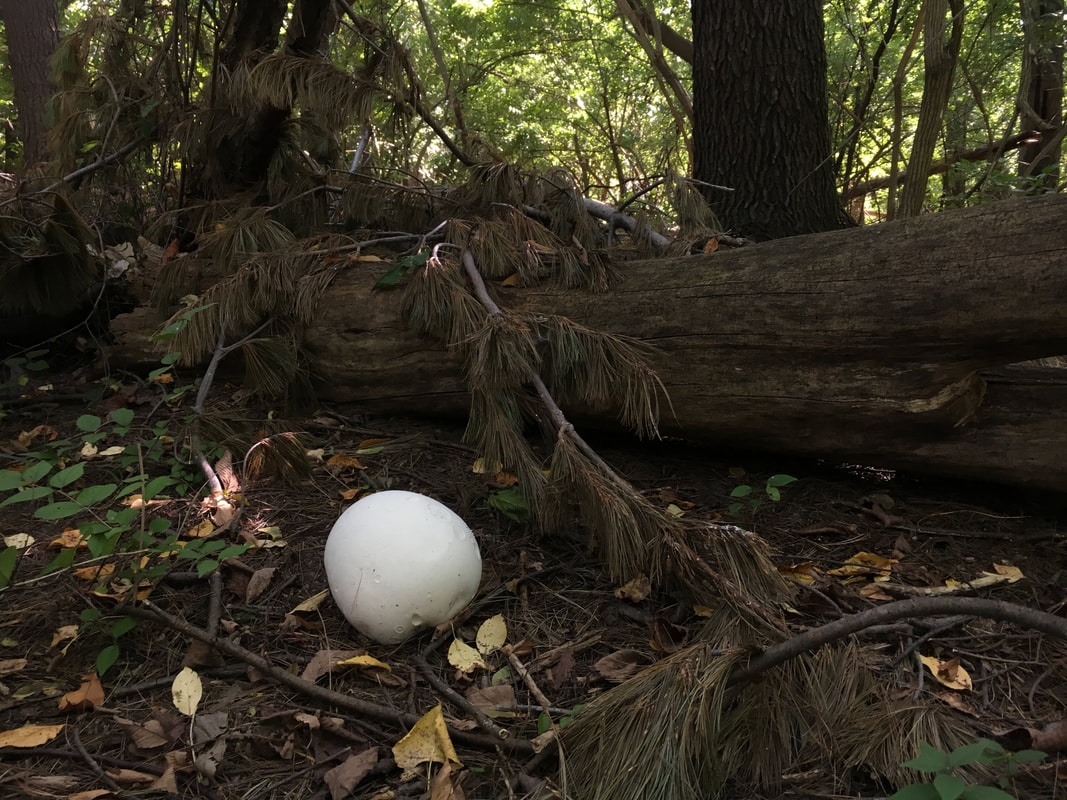|
Mycobank Taxonomy: Fungi, Dikarya, Basidiomycota, Agaricomycotina, Agaricomycetes, Agaricales, Agaricaceae, Calvatia Calvatia gigantea is not a good mushroom. It can be so huge, such a massive marshmallow, that I want so badly for it to be tasty. I’ve baked it as pizza crust, sautéed it, and deep fried it as puffball parmesan, but it’s never good. The smaller the ratio of puffball to other things (fried bits, sauce, veggies) the better. I’m no mathematician, but I think if you take that property to it’s limit, the best puffball dish is one that does not contain any puffball at all. In my opinion, this mushroom smells and tastes chemically, like a permanent marker. Chalk it up to bad cooking or subpar specimens, but I would argue that I’m a pretty good cook and that I’ve selected the finest, youngest, whitest, firmest, maggotless puffballs around, but Calvatia gigantea still makes good food taste bad. It’s not a good mushroom. Regardless of my personal opinions, it is my unpartisan mycological civic duty to give you the resources necessary to find and prepare this mushroom. Fortunately for you, other people find this mushroom tasty – or ignore its taste and eat it in celebration of bounty – and lots of information exists out there on how to locate, dissect, and consume giant puffballs. The best resource I know of is this detailed post by Alan Bergo at foragerchef.com. Reading this page, Alan even makes me want to give them another try. SpecimenACD0221, 12 October 2019; Washtenaw Co., MI, USA; leg. Alden C. Dirks, det. Alden C. Dirks, MICH 352216. Online Resources
2 Comments
Eric Waggoner
4/22/2020 09:22:40 pm
Alan Bergo's puffball butter recipe is the only reason to harvest one of these in my opinion.
Reply
Your comment will be posted after it is approved.
Leave a Reply. |
PermalinksProject Introduction Top EdiblesHericium coralloides
Laetiporus sulphureus Morchella americana Polyporus umbellatus Suillus ampliporus Archives
April 2023
Categories |
|
|
Terms of Use, Liability Waiver, and Licensing
The material on aldendirks.com is presented for general informational and educational purposes only, and under no circumstances is to be considered a substitute for identification of an actual biological specimen by a person qualified to make that judgment. Some fungi are poisonous; please be cautious. All images on this website are licensed under Attribution-NonCommercial-NoDerivatives 4.0 International (CC BY-NC-ND 4.0). |


 RSS Feed
RSS Feed




